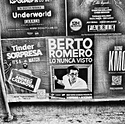dwross2
Member
- Joined
- Jan 3, 2007
- Messages
- 160
- Format
- Large Format
Hi All:
Some of you may be aware of the Silver Gelatin forum on APUG. Making developing-out silver gelatin paper (i.e. b&w paper ) is not widely practiced yet. I have high, high hopes that will change soon. I'm lonely!
) is not widely practiced yet. I have high, high hopes that will change soon. I'm lonely!
Unfortunately, APUG is doing its APUG thing to the dialogue. If you recognize what I mean by that, I need say no more. If you don't, I don't know how to say more.
Long story short (hard for me! ) I'm moving any contributions I have to make to the emulsion-making dialogue to hybrid. We're still a little thin on the non-digital facets of our crafts, but I think that is changing. In the interest of fleshing out tech info, I have recently posted an update to my AgGel research.
) I'm moving any contributions I have to make to the emulsion-making dialogue to hybrid. We're still a little thin on the non-digital facets of our crafts, but I think that is changing. In the interest of fleshing out tech info, I have recently posted an update to my AgGel research.
http://dwrphotos.com/blog/Section7/Toning.htm#Current
Hopefully it will start a conversation here -a very small and very slow conversation, to be sure, but yuh gotta start somewhere.
Cheers,
d
Some of you may be aware of the Silver Gelatin forum on APUG. Making developing-out silver gelatin paper (i.e. b&w paper
 ) is not widely practiced yet. I have high, high hopes that will change soon. I'm lonely!
) is not widely practiced yet. I have high, high hopes that will change soon. I'm lonely! Unfortunately, APUG is doing its APUG thing to the dialogue. If you recognize what I mean by that, I need say no more. If you don't, I don't know how to say more.
Long story short (hard for me!
 ) I'm moving any contributions I have to make to the emulsion-making dialogue to hybrid. We're still a little thin on the non-digital facets of our crafts, but I think that is changing. In the interest of fleshing out tech info, I have recently posted an update to my AgGel research.
) I'm moving any contributions I have to make to the emulsion-making dialogue to hybrid. We're still a little thin on the non-digital facets of our crafts, but I think that is changing. In the interest of fleshing out tech info, I have recently posted an update to my AgGel research. http://dwrphotos.com/blog/Section7/Toning.htm#Current
Hopefully it will start a conversation here -a very small and very slow conversation, to be sure, but yuh gotta start somewhere.
Cheers,
d





